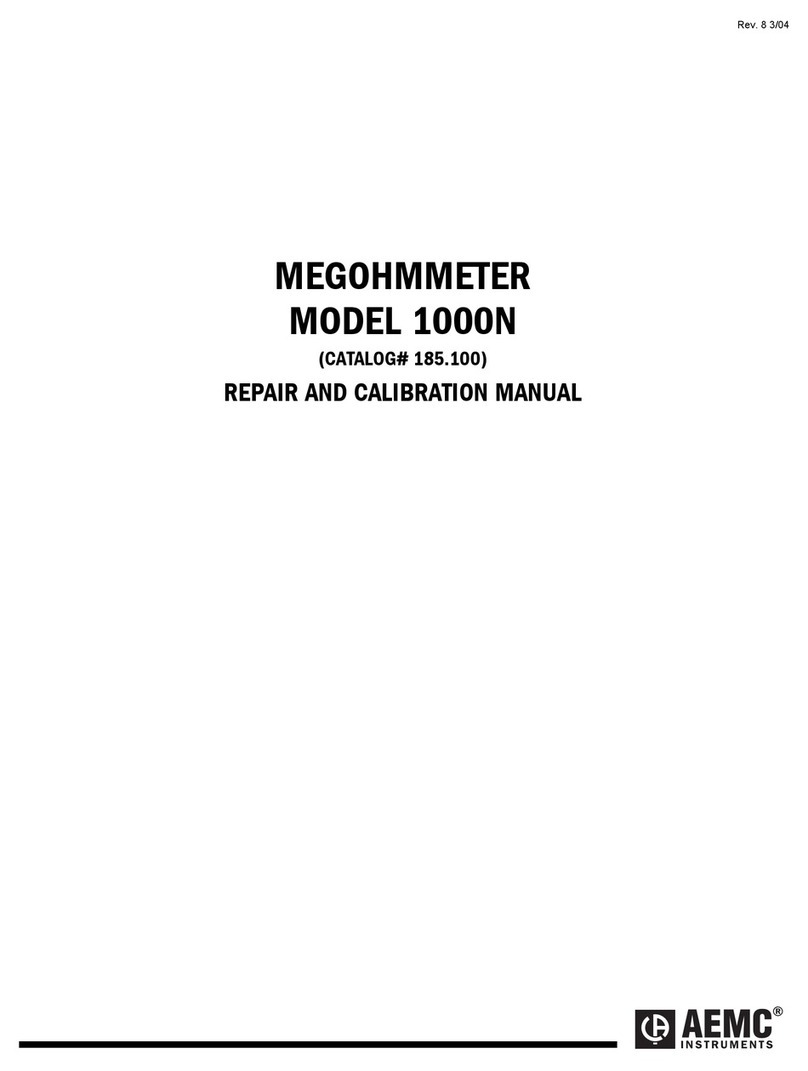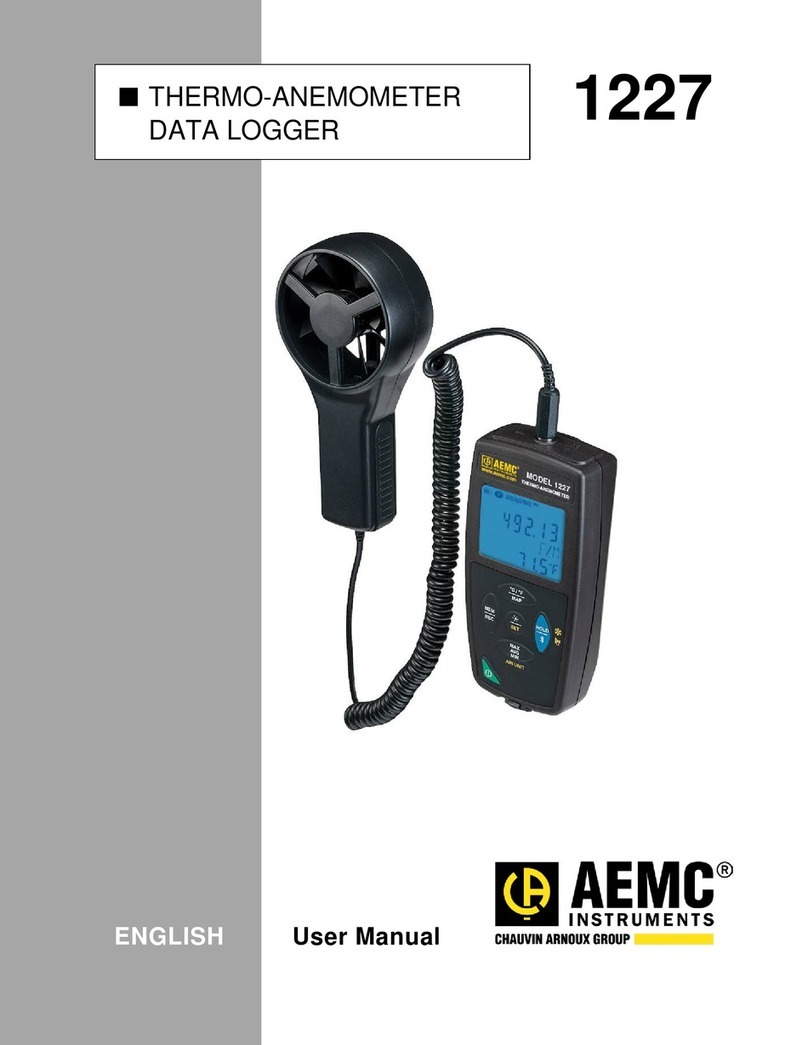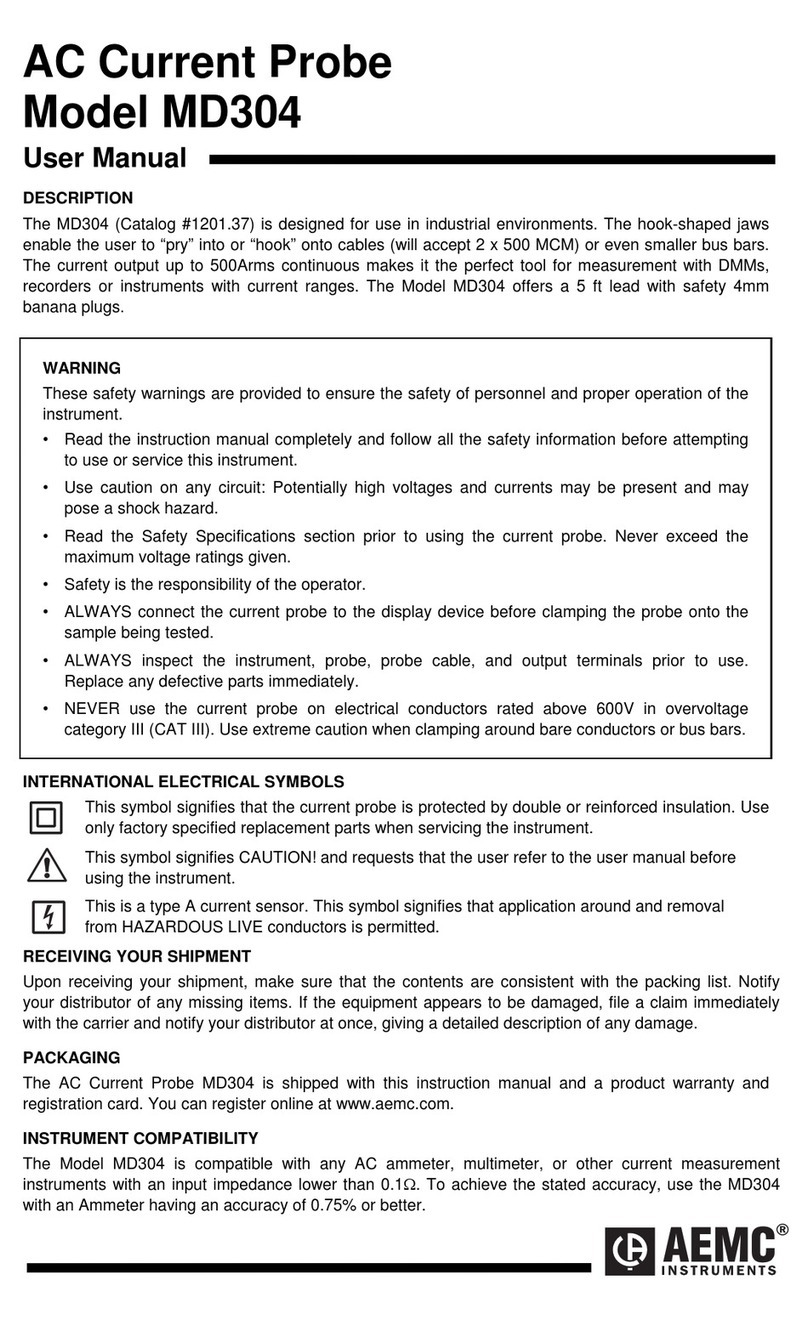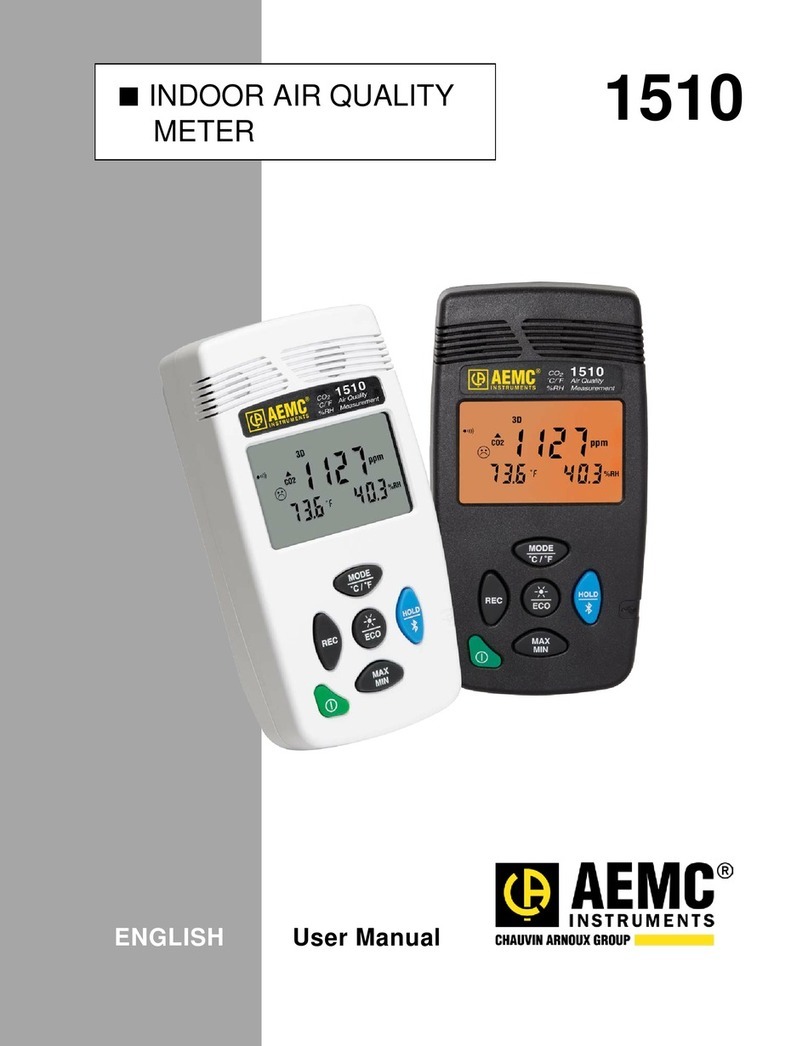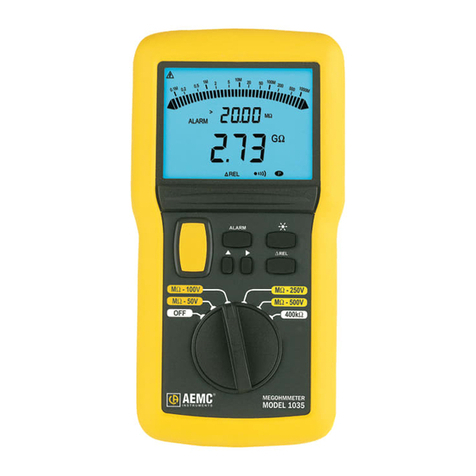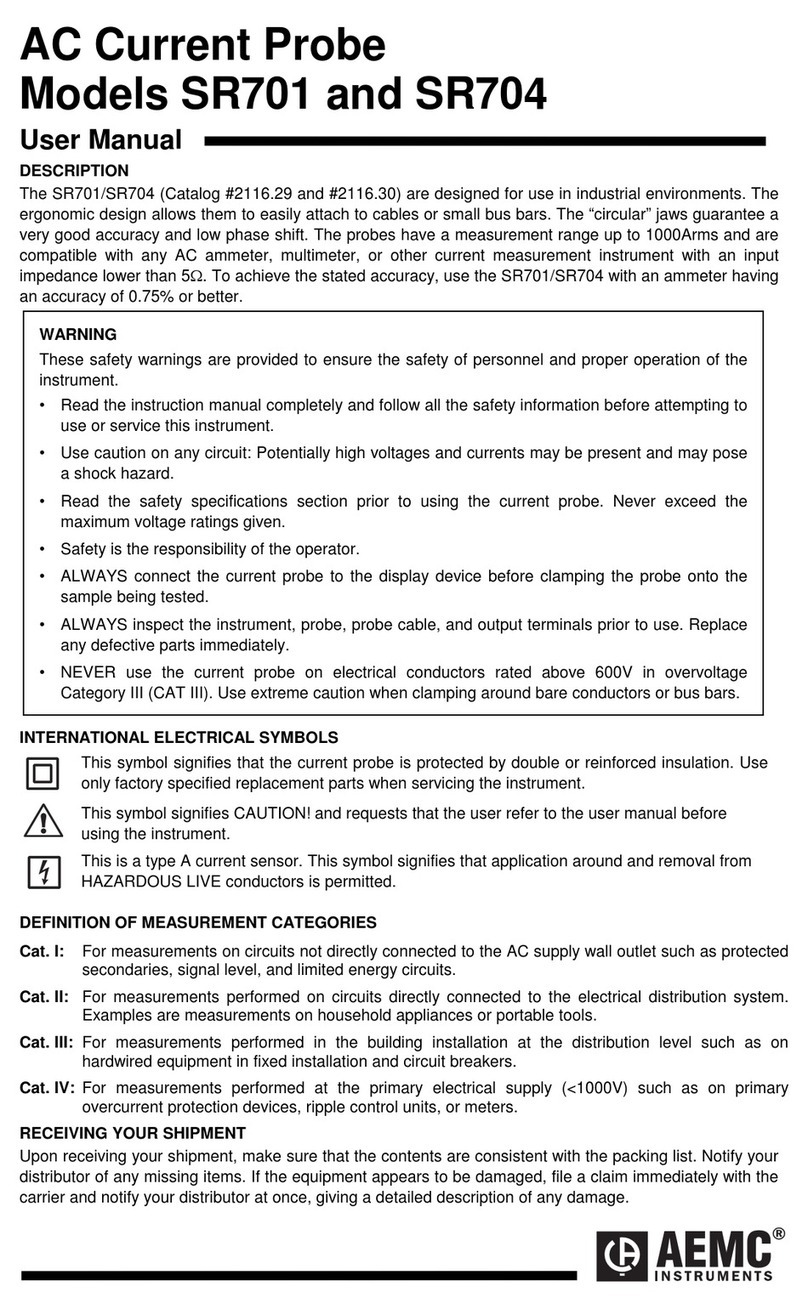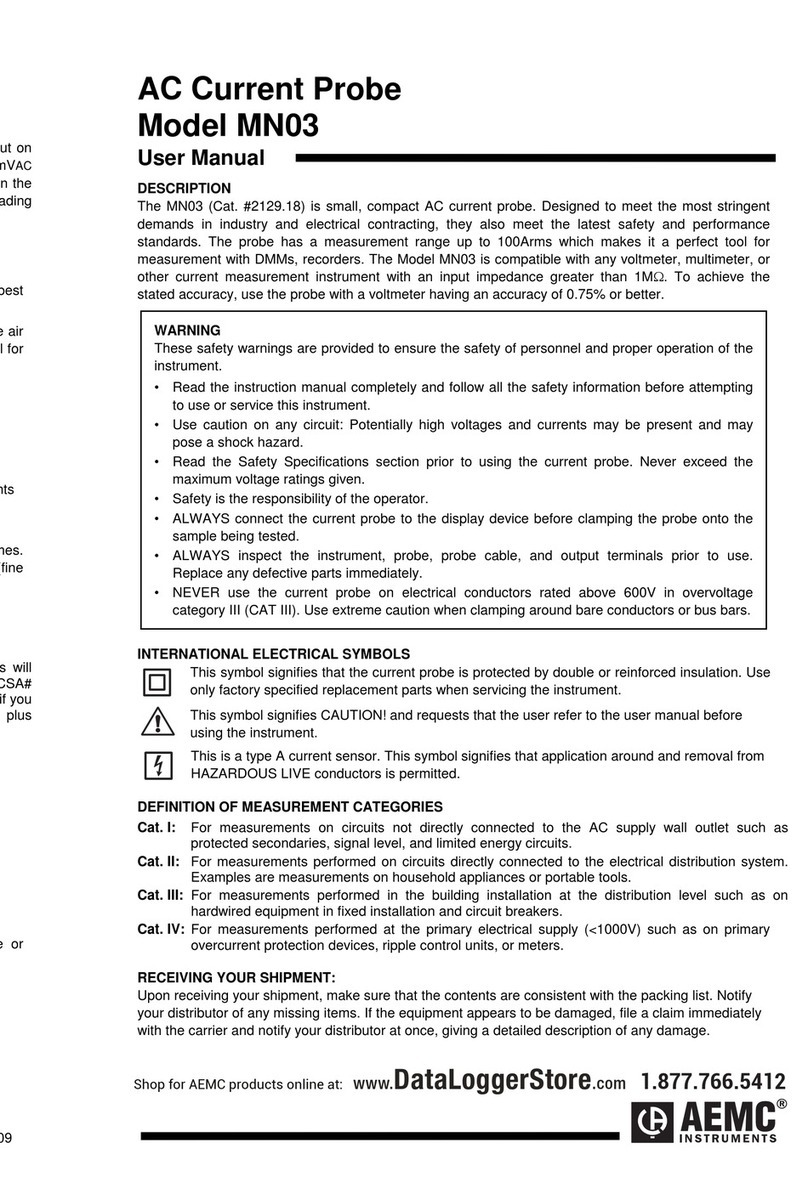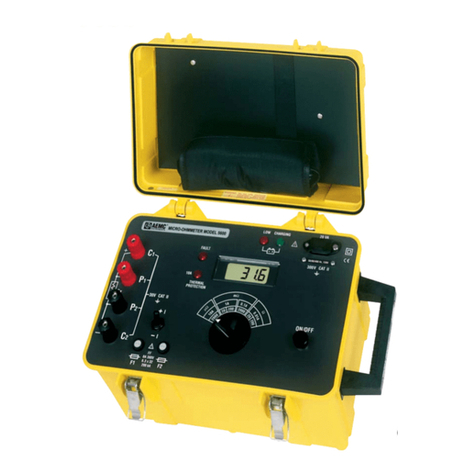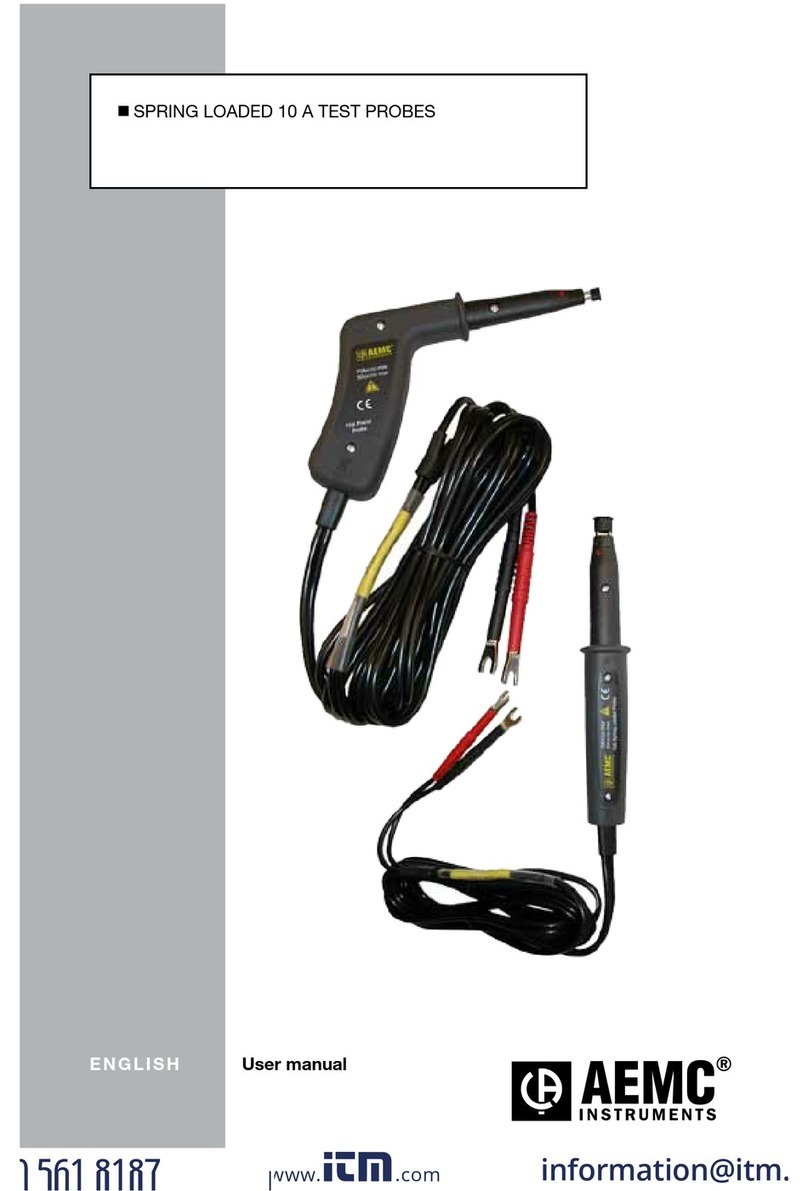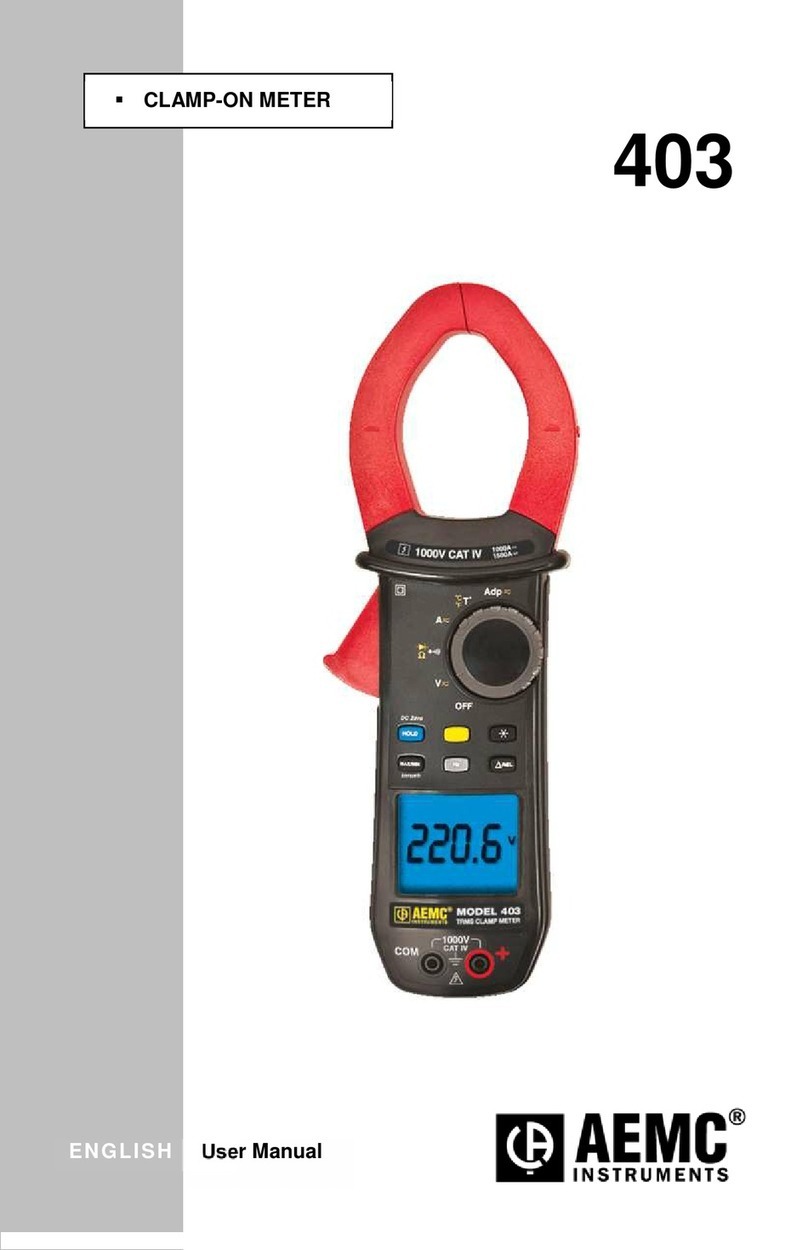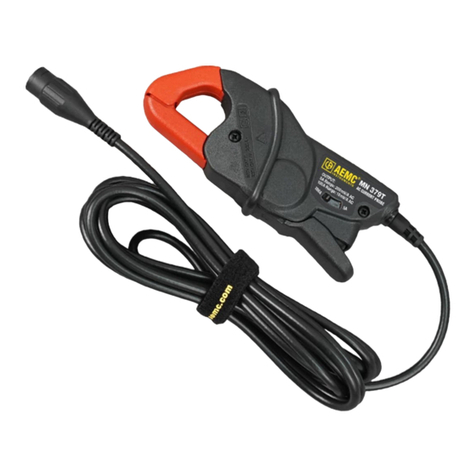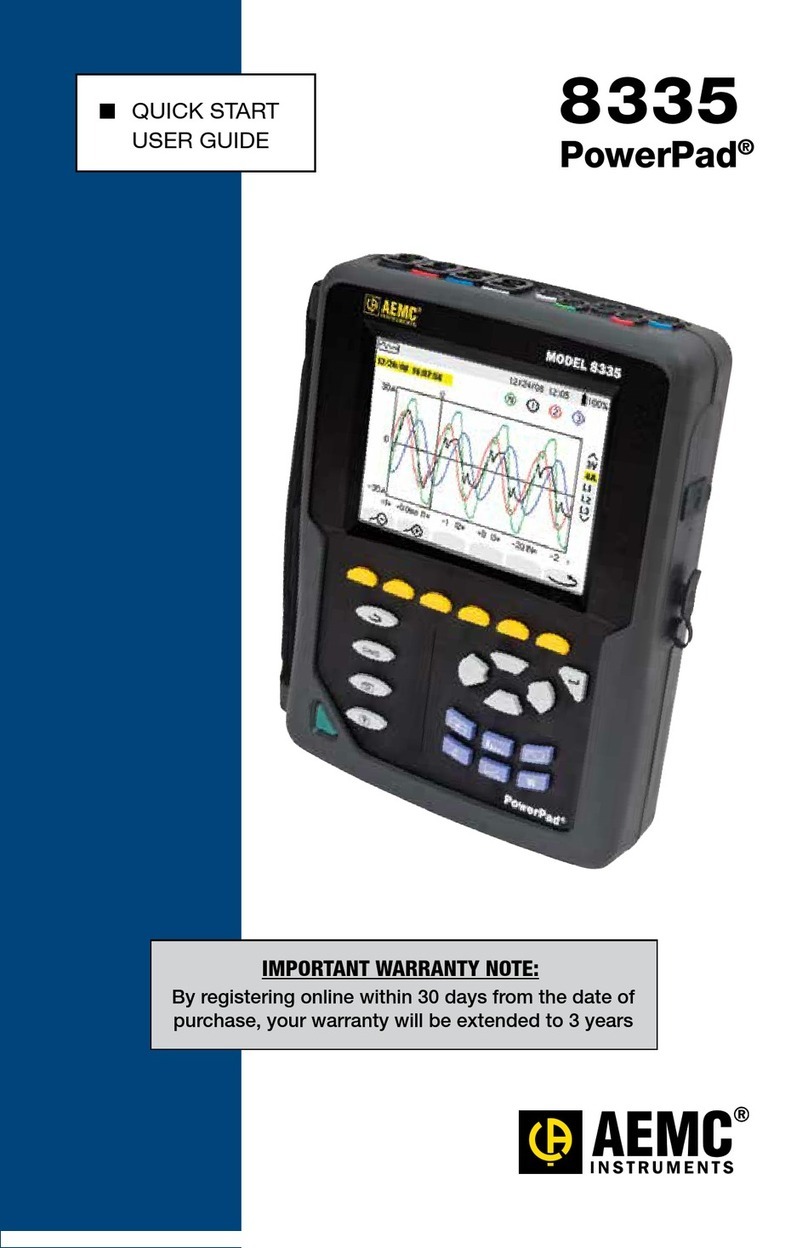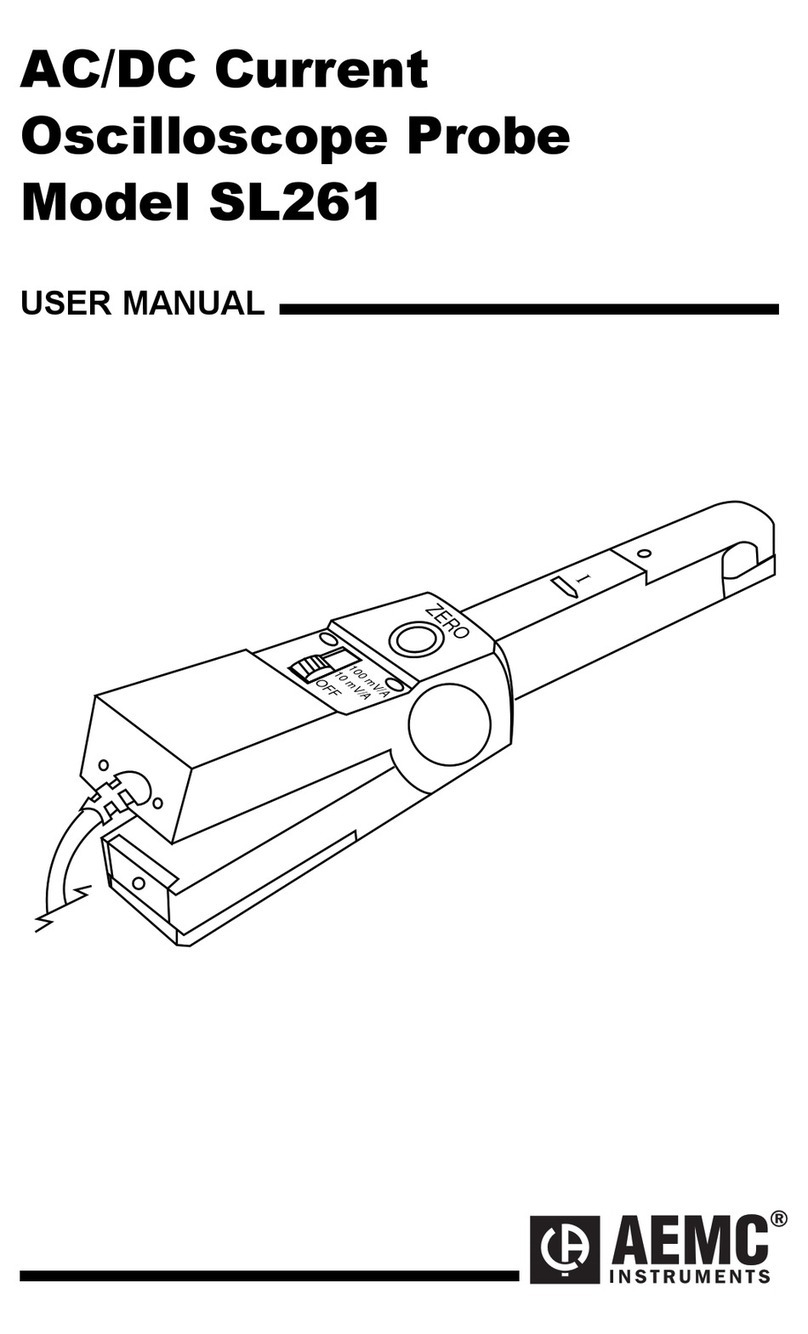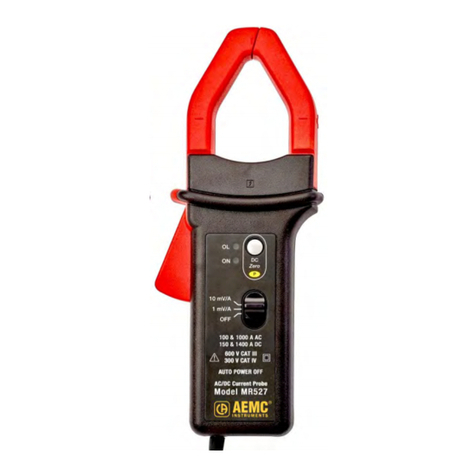4
Digital Ground Resistance Tester Model 4500
1.1 International Electrical Symbols
Thissymbolsigniesthattheinstrumentisprotectedbydoubleor
reinforced insulation. Use only specied replacement parts when
servicing the instrument.
This symbol on the instrument indicates a WARNING and that
the operator must refer to the user manual for instructions before
operating the instrument. In this manual, the symbol preceding
instructions indicates that if the instructions are not followed, bodily
injury,installation/sampleandproductdamagemayresult.
Risk of electric shock. The voltage at the parts marked with this
symbol may be dangerous.
1.2 Receiving Your Shipment
Upon receiving your shipment, make sure that the contents are consistent
with the packing list. Notify your distributor of any missing items. If the equip-
mentappearstobedamaged,leaclaimimmediatelywiththecarrierand
notify your distributor at once, giving a detailed description of any damage.
Save the damaged packing container to substantiate your claim.
1.3 Ordering Information
Ground Resistance Tester Model 4500
............................... Cat. #450.100
Includes AC power supply cord, 12V nickel-cadmium battery (installed), adhesive label (C1-
P1-P2-C2), hex key, spare fuse, and user manual.
1.3.1 Accessories and Replacement Parts
Test Kit for Model 4500...................................................................... Cat. #100.525
Includes Canvas Bag, [2] 500 ft Color-coded Leads on Reels, [1] 30 ft Color-coded Lead,
[2] T-shaped Auxiliary Ground Electrodes.
Test Kit for 3-Point Testing (Supplementalfor4-Pointtesting) ........ Cat. #2130.61
Includes Carrying Bag, [2] 100 ft Color-coded Leads, [1] 16 ft Lead and [2] 16" T-shaped
Auxiliary Ground Electrodes.
Battery–Replacement12VNiCD....................................... Cat. #2960.10
Fuse-Setof3,3.15A,250V,6x32mm(chargerboard)........ Cat. #100.357
Fuse–Setof5,0.1A,380V,6x32mm(measureboard)......... Cat. #2970.12
















